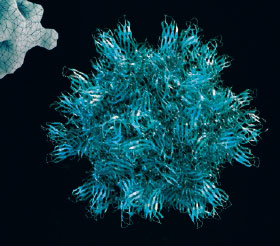
To read more content about aviNews 2019 ENG
To read more content about aviNews 2019 ENG
Contenido disponible en:
Español (Spanish)
The infectious bursal disease, avian infectious bursal disease (IBD) or Gumboro disease, is caused by the infectious bursal disease virus (IBDV). The virus infects immature B lymphocytes in the bursa of Fabricius located near the chickens’ cloaca, causing immunosuppression, secondary infections associated with opportunistic pathogens, reduced responses to vaccination programs, and greater clinical reactions to live attenuated vaccines.
In addition to morbidity and mortality, this disease also causes:
Control of IBD is primarily done by vaccination

When we think of viruses that can change rapidly and hamper our vaccination efforts, IBDV is rarely one of them. However, this RNA virus has evolved slowly since its discovery in 1962.
This fact became apparent when vaccine failures in broiler flocks revealed the presence of a second antigenic type of IBDV known as a variant. Vaccines against the parent (classic) IBDV did not protect birds against these antigenic variants of the virus.
The terms classic and variant are still used to describe IBDV strains, but we now know that the evolution of the virus has resulted in many new antigenic types. This is a problem, as the commercial vaccines were obtained from IBDV strains that are over 30 years old, and do not resemble the antigenic types of IBDV found in current broiler and layer flocks.
How can we control such continuously evolving strains of IBDV?
Maternal immunity is the first line of defense against IBDV challenges in chicks. Vaccination / challenge studies have clearly shown that IBDV has evolved and that there are a number of different antigenic types. This phenomenon known as “antigenic drift” is the reason why many breeder flock vaccines offer little to no protection. This situation has led to the use of inactivated autogenous vaccines, that is, those obtained from current field virus isolates.
Autogenous vaccines in breeder flocks confer maternal immunity to their progeny against emerging strains of IBDV. However, these vaccines can also have some drawbacks and are not always the best answer: